The streets of Prague are just full of statues and sculptors. Some are more conventional, depicting well known figures from Czech history, some stand as a memorial to events in the nation’s past, some are abstract, some are humorous and some are just downright bizarre, but all of them have a story. The stories and the symbolism behind the sculptors are not always obvious, so we have compiled this short guide to some of Prague’s most interesting installations and what they represent.
1) The Faceless Knight by Ladislav Saloun
The faceless knight stands guard outside Prague’s city hall. The story goes, that this killed his lover in an angry rage and as punishment; he was entombed alive in stone. The knight’s only chance of breaking free from his prison is to find the love of a “pure” woman on the exact anniversary of the murder. Unfortunately for him, this exact date has been lost to history, so it seems unlikely that he will ever win his freedom. The Prague city hall can be found on Mariánské námesti and is close to Staromestka Metro Station (A Line).
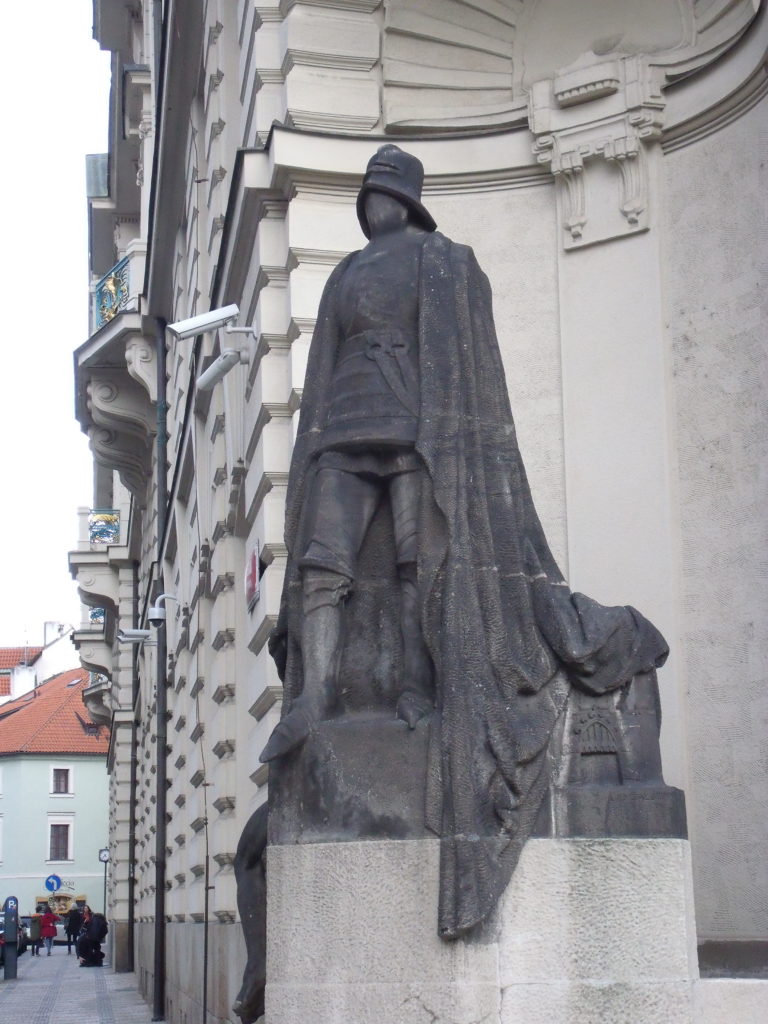
2) The Statue of Nicholas Winton by Flor Kent
The story of Nicholas Winton is one which I’m ashamed to admit that I hadn’t heard before moving to Prague. Nicholas was a British man who single-handedly organized the evacuation of 669 mostly Jewish children from the Czech Republic between 1938 and 1939. As a result of his actions, these children were spared the worst horrors of the holocaust. Nicholas Winton is a real hero in the Czech Republic and has been awarded The White Lion, which is the country’s highest honour. He sadly died in 2015 at the age of 106, but his actions will never be forgotten by the Czech people. On September 1st 2009 a life size statue of him alongside 2 young children and a suitcase was unveiled on Platform 1 at Prague’s main train station (Hlavni Nadrazi). This marked the 70th anniversary of the day that the last train of kids pulled out of this very station.
3) The Penguins at Kampa Park by the Cracking Art Group
This is one of my absolute favourite installations in Prague but up until very recently I was unaware of its symbolism. The Cracking Art Group is a group of 6 international artists who have made it their mission to send a message about the dangers of climate change and the need for society to take positive action to protect our environment. The 34 adorable penguins that stand in an orderly line along the bank of the river Vltava near to Kampa Park are all made of recycled plastic bottles. They stand as example of what can be produced by recycling our waste. You can get a good view of the penguins from Kampa Park. Whilst exploring Kampa Park, you also cannot fail to notice the giant, faceless babies. These are the work of probably the Czech Republic’s most notorious sculptor, David Cerny. To find out more about the babies and other sculptures by David Cerny which can be found in Prague, check out our David Cerny Tour.
Tip: If you are interested in art and sculpture, take a look around the free sculpture garden in the courtyard of the Kampa Art Gallery. It contains some quite interesting pieces from up and coming Czech artists.
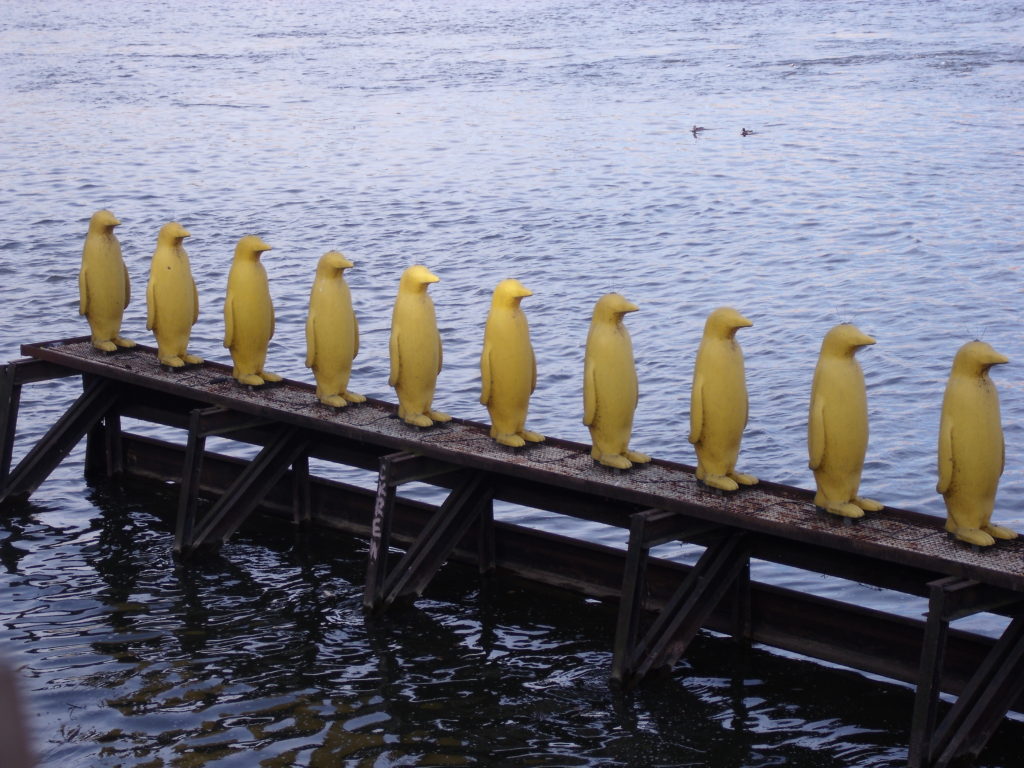
4) The Statue of Jaroslav Hasek by Karel Nepras and Karolina Neprasova
Jaroslav Hasek is one of Prague’s most famous writers. His work was highly satirical and he used humour and absurdity to highlight his disdain for the authority figures of the day. Somehow I think he would have approved of this somewhat bizarre sculpture, which was built in his memory. His bust is depicted riding a rather oddly shaped horse. This is all the more puzzling when you consider that Hasek had no particular fondness for horses and actually never rode one during his whole life. It is said that the statue is actually a reference to Hasek’s love of alcohol, with the horse’s flat, square back representing a pub table. The statue was even baptised with beer at its unveiling in 2005. The horse is probably intended to be a subtle parody of the famous horse on the nearby Vitkov Hill. You you can actually see both horses if you stand facing the statue at the right angle. The statue can be found on Prokopovo Namesti in the district of Zizkov.
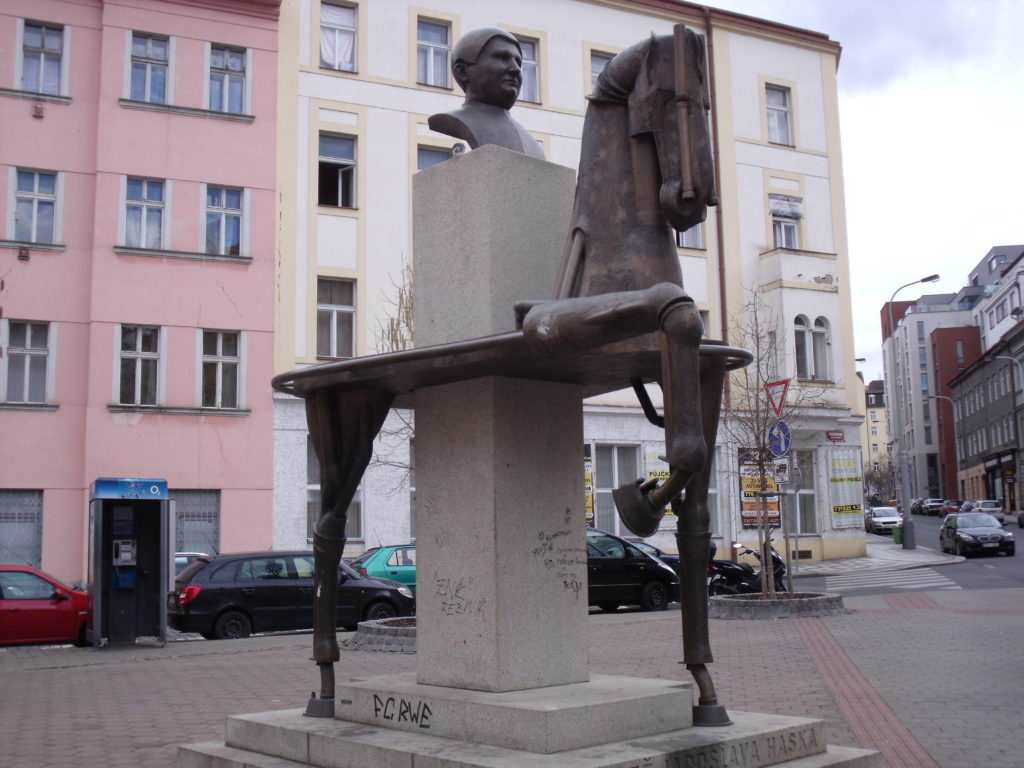
5) The Statue of Karel Hynek Macha in Petrin Park by Josef Vaclav Myslbek
As you walk up the snaking path to the top of Petrin Hill, you will come face to face with Karel Hynek Macha. This delightful statue portrays a strong sense of playfulness and carefree youth, but the life of the man who came to be one of the Czech Republic’s most acclaimed poets was actually riddled with tragedy. He died at the tender age of 26 on the day before his wedding to a woman who had already fathered his child. His most famous work was the poem Maj (May), which was published at his own expense just before his death. However, it was not met with enthusiasm and was strongly criticised at the time of its publication. In fact, he was widely considered to be a failure as a poet and as a result, was given a pauper’s burial in 1836. Years after his death, his work was rediscovered by academics, it was finally given the appreciation that it deserved and his poem Maj came to be one of the most significant works of Czech literature. These days, Maj is compulsory reading in Czech schools and most Czech people are able to recite at least its opening lines:
“Late evening, on the first of May—
The twilit May—the time of love.”
In 1939, the body of Karel Hynek Macha was exhumed and he was given a full state funeral. Today, you can visit his gravestone in Vysehrad Cemetry, where he lies alongside some of the most prominent members of the Czech artistic community.
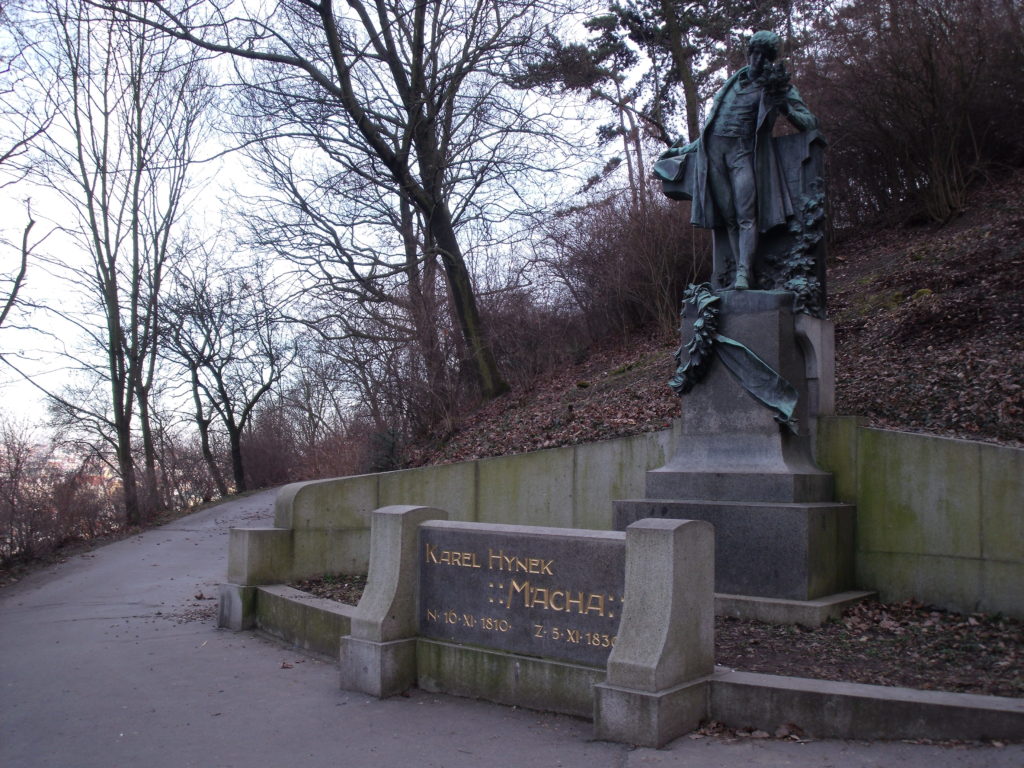
6) Hands reaching out of the wall on Narodni Trida
Part way down Narodni Street in Prague 1, you will find a small covered arcade. Mounted on the wall here is a bronze plaque bearing the date 17/11/1989 and with several hands which are apparently reaching out at you from the wall. The story of this plaque takes us back to a time of political upheaval, when students and political dissidents were taking to the streets in massive numbers to demonstrate against communist rule. This plaque is a memorial to students who were attacked and beaten by communist police forces during the Velvet Revolution, which took place in Prague on November 17th 1989. On this day, 41 years of communist rule came to an end in what was then Czechoslovakia. This day continues to be a national holiday in the Czech Republic and it is common for politically fueled demonstrations and marches to take place throughout the city.
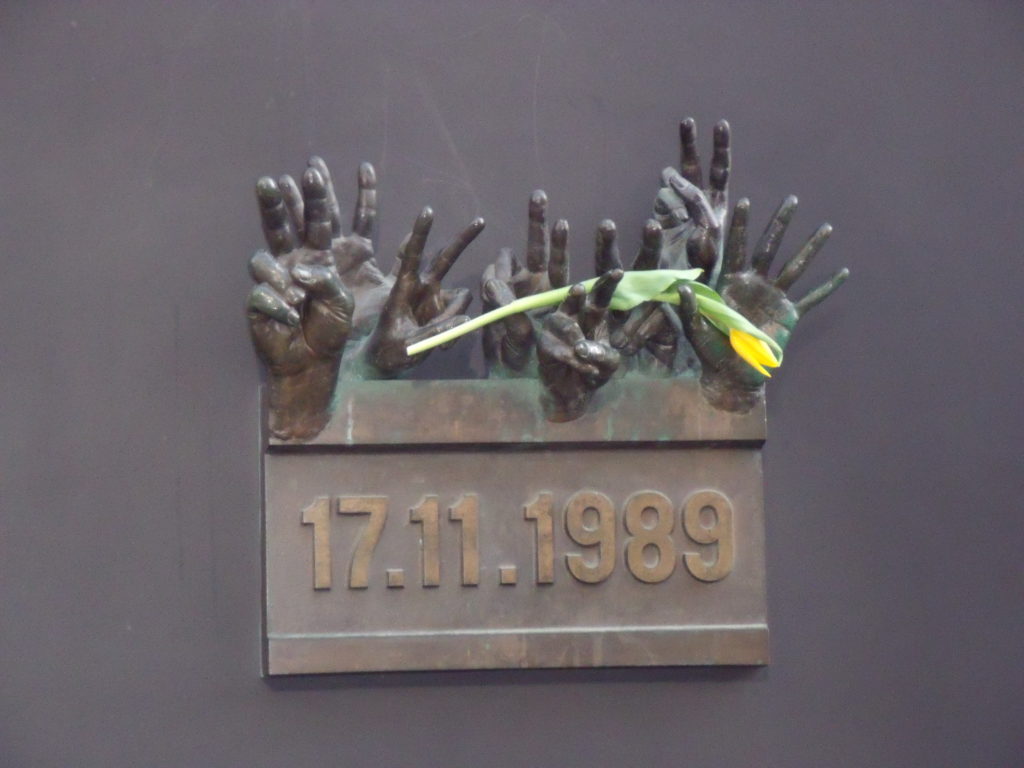
7) Dancing Musicians by Anna Chromy
This is another of my absolute favourite statues in Prague and of course it’s perfectly possible to appreciate this masterpiece without knowing about its symbolism but for those of you who want to impress your friends with some local knowledge, we’ve done a bit of research into what this statue is all about. Each of the 4 figures dancing around this fountain actually represents a river. The violinist represents the Danube, the horn player represents the Mississippi, the mandolin player represents the River Ganges and the flute player represents the Amazon. The statue can be found in the centre of Senovazne Namesti, it is close to Jindrisska Tram Stop.
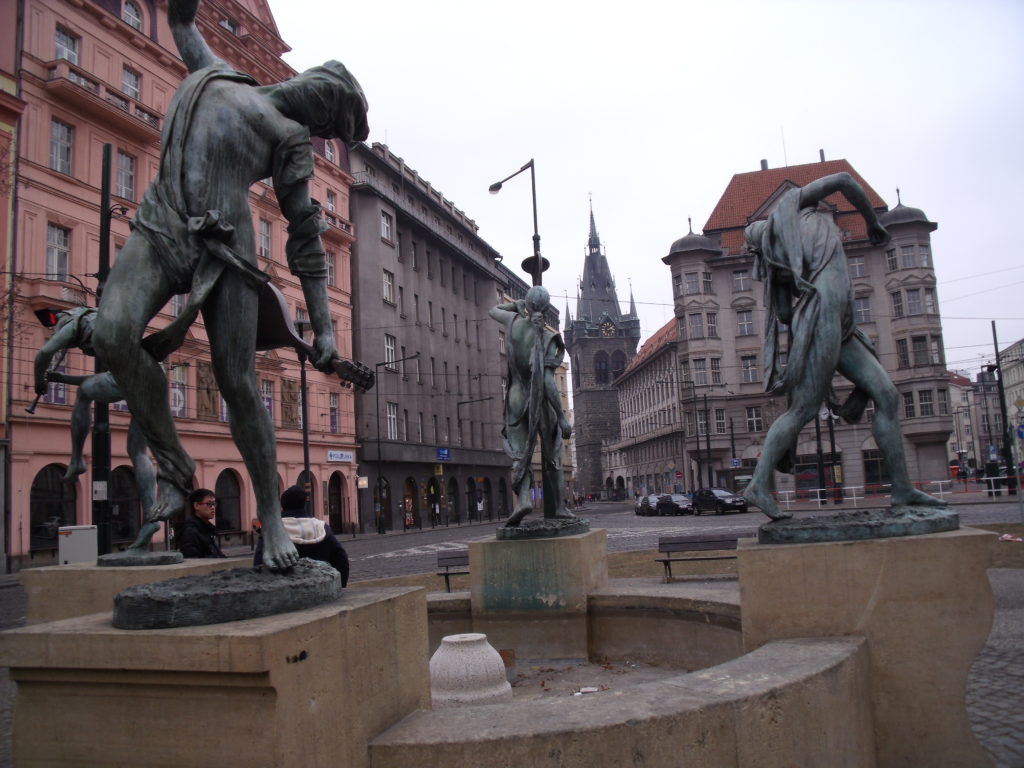
8) The Pond by Kurt Gebauer
The next one is going to be a bit of a tough sell and not because the sculpture is lacking in beauty or presence, because this final piece is actually one of my favourite artistic finds in the city. It’s going to be a tough sell because to find it, you will have to go way out of Prague’s centre to the suburb of Stodulky (it is around 20 minutes on the Metro from Mustek Station). Stodulky is not a neighbourhood known for its beauty. Like our red lady, with her chipped and faded red paintwork, parts of Stodulky have a somewhat neglected and dilapidated feel but that is not to say it isn’t worth a visit. I was surprised by how much I enjoyed walking through Stodulky. It’s a district of clashes and contrasts, with state of the art modern apartment buildings standing right next to crumbling old ruins of buildings. The charming Neo-Gothic Church of St. James the Elder is just round the corner from a heavily graffitied discount supermarket and from the newly built business park you can look out over a communist era housing estate.
The story behind this eye-catching piece of art takes us back to 1989, when what was then Czechoslovakia was under Communist rule. This was an interesting time for artists, as although free experimentation in art was widely discouraged, there was still a big demand for art installations to be produced. Because of this, it is known as the time of “Normalization”. This statue by Kurt Gebauer, depicting a startlingly red naked lady standing in a large pond is a great example of the work that was being produced around that time, where the theme of nudity was a common one. The statue is on Kovavora Street, which is a 5 minute walk from Stodulky Metro (B Line).
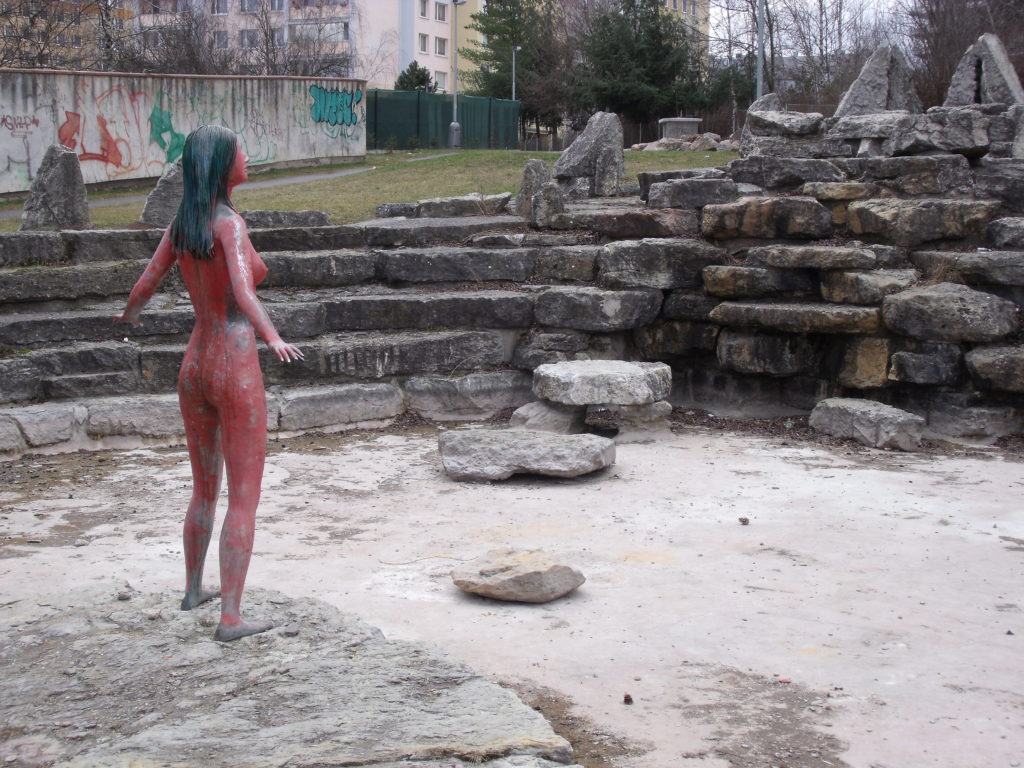
Honest Tips For Your Prague Stay
AIRPORT TRANSFER Get a private transfer from/to Prague Airport for a price of regular taxi (€31).
PRAGUE CITY CARD Save time and money with Prague Card, and see 60+ sights for free.